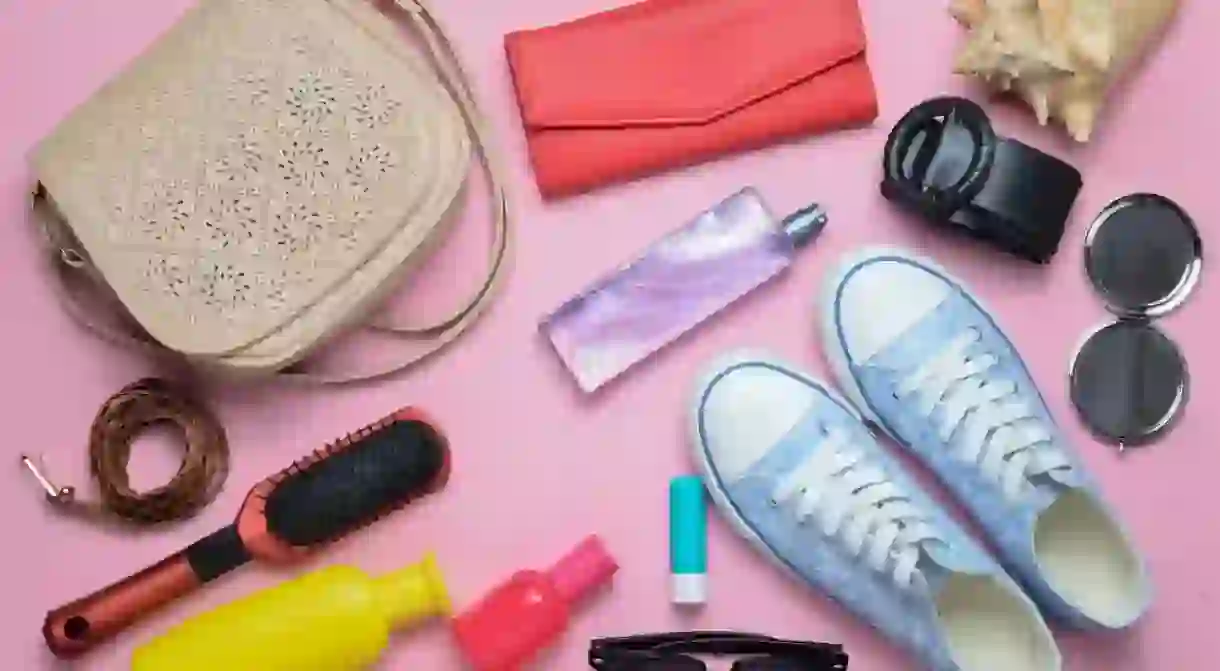What Happens to Beauty Products Confiscated by the TSA?

By now, you should be familiar with the Transportation Security Administration’s (TSA) “3-1-1” regulations for packing beauty products. Still, you might find yourself at the airport scanning machine pleading with an agent to let you through with a full-sized bottle of dry shampoo in your carry-on. Sorry, but that’s just not going to fly. A spokesperson from the TSA explains how to travel in style, and sheds light on what happens to all those beauty products confiscated at the airport.

Lisa Farbstein, spokesperson for the TSA, understands that beauty products “are not cheap,” and that no one wants to part with a $45 bottle of ORIBE Dry Shampoo. But terrorist threats are real, and the “one job of the TSA is to get you to your destination safely.”
Farbstein explains that the “3-1-1” rule stands for the exact amount of liquid, gel, and aerosol you may carry onto a flight: 3.4 ounces (100 milliliters) in one 1-quart-size resealable bag. The reasoning behind limiting in-flight access to liquids is for your protection; according to Farbstein, the chance of making a non-metallic bomb from 100 milliliters of liquid is greatly reduced.
“The 3-1-1 rule was designed to detect and prevent non-metallic bomb threats,” Farbstein told Culture Trip. With this in mind, safety is definitely worth the inconvenience of getting your full-sized beauty products confiscated.
So, what happens to beauty products that are confiscated by the TSA? According to Farbstein, “They’re thrown out. We don’t know if a product has been tampered with, and we have to be as cautious as possible.” She also adds that travelers are always given the option of checking the item (which might mean a trip back through security to locate your bag), or handing it off to a non-traveling companions. “Some airports now have mailing centers,” Farbstein explains, so travelers can post their confiscated products rather than tossing them.
How do you know if your item is a liquid? With the gamut of beauty products like creamy eyeliner, lip gloss, and dry shampoo, you might find your favorite item confiscated because the TSA considers it a liquid.
“If you can spill it, spray it, spread it, pump it, or pour it,” Farbstein says, the TSA considers it a liquid. So, that jar of coconut oil you’re using as moisturizer needs to be packed in a travel-sized container, or checked in with your luggage, and don’t be fooled by the name “dry” shampoo—this product comes in an aerosol container and you can spray it, so it needs to be 3.4 ounces or less if you want to carry it on board. “Items like peanut butter and honey get taken all the time,” Farbstein continues. “You’d be surprised how many people travel with peanut butter.”
Farbstein offers some interesting ideas for working around these rules, like packing empty water bottles and then filling them once you make it through security if you don’t want to pay the hiked-up prices for water. “People like to stay hydrated on a flight,” says Farbstein, citing the advice beauty experts have been touting for years to keep skin supple and fresh while in flight.
You can also plan to buy beauty products once you reach your destination. “L’Occitane and Kiehl’s are both beauty brands that are found in arrivals at many domestic airports,” says Farbstein, adding that she’s not endorsing any specific products. Of course, many brands design TSA-friendly beauty products with the TSA size restrictions in mind.
A post shared by BIODERMA USA (@biodermausa) on Mar 28, 2018 at 12:00pm PDT
Another beauty tip for the jet-set fashionista is to forego the trendy messy bun or any other type of “stylish hairstyle that’s not easily recognizable by the scanning machine,” Farbstein advises. Anything that distorts the shape of your head will most likely result in a pat-down. “The machine looks for what the shape of the body is,” Farbstein explains. Respectively, don’t wear your sunglasses atop your head for the same reason.
“The most common item to be left behind [in bins] is a pair of sunglasses,” says Farbstein, urging people to pack their sunnies in their carry-on when going through security. Finally, to avoid a pat-down on the chest, turn your bulky necklace around, and avoid tying scarves in the front. And don’t think that wearing flip-flops to the airport will get you out of checking your shoes. “Unless you’re certified for pre-check,” Farbstein notes, “expect to remove everything on your feet—even your flip-flops.”













